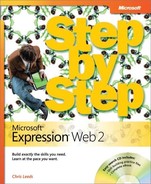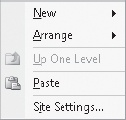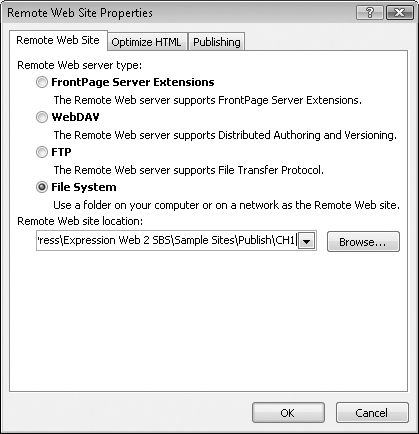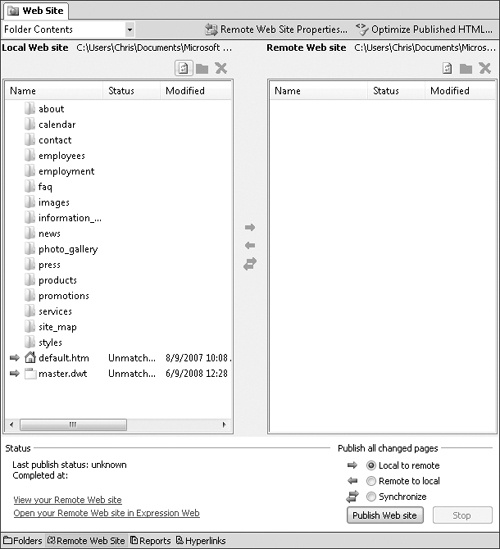In addition to the default Folders view, Expression Web 2 provides a number of other views to assist in designing and managing a site.
In Expression Web 2, when a site is open but no individual files are open, four views are available at the bottom of your main workspace: Folders, Remote Web Site, Reports, and Hyperlinks.
In this exercise, you will set up a remote Web site and examine it on a folder level.
Note
USE the CH1 sample site you modified in the previous exercise.
OPEN the CH1 site if it isn’t already open.
Click the Web Site tab at the top of the workspace to ensure that you’re in Web Site view.
Tip
Right-click the white space below the list of files and folders in your main workspace. A shortcut menu opens, displaying the New and Arrange commands, both of which have submenus.
Tip
The commands in the shortcut menu are those which are most often needed when working in this view. From the New submenu, you can select various types of new files or even a new folder. From the Arrange submenu, you can select many different ways to arrange the files that you see in Folders view. When you are working on a large site, using these different criteria to arrange the files in your workspace makes it easier for you to navigate and to find particular files quickly.
Click Remote Web Site View at the bottom of your main workspace.
An empty view and a prompt to set up a remote Web site opens.
In the upper-right corner of the workspace, click Remote Web Site Properties.
The Remote Web Site Properties dialog box opens.
Click File System as your remote Web server type.
Click Browse, and browse to DocumentsExpression Web 2 SBSSample SitesPublishCH1, which will be your remote site. Then click Open, and in the Remote Website Properties dialog box, click OK.
At the bottom of your main workspace, click Reports.
Expression Web 2 displays the default Site Summary report containing a variety of statistical information about your site.
Above your main workspace, click the Site Summary arrow.
All of the various reports are available from the menu that opens. The reports are segregated into three logical groups: Files, Shared Content, and Problems, to make it easier for you to find the specific report view you need.
At the bottom of your main workspace, click Hyperlinks.
In the Folder List, click default.htm to display the page and its linked files in the main workspace.








